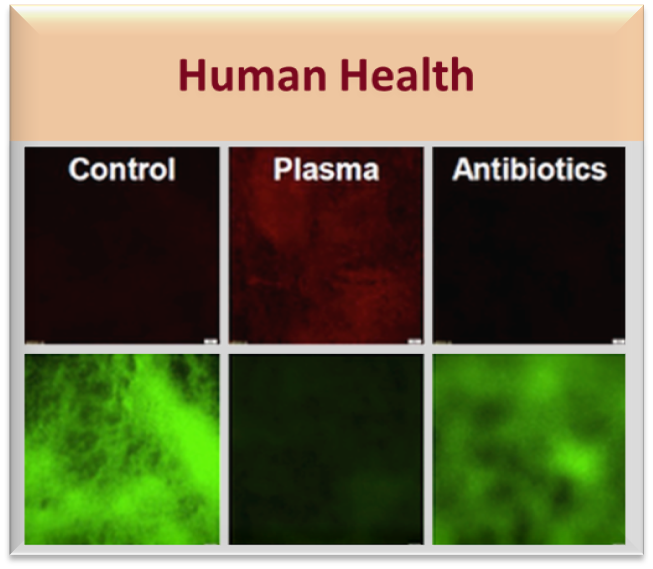
Cold atmospheric pressure plasma (CAP), is a promising technology that is being investigated for various applications in healthcare. The use of low-temperature plasmas for bio-decontamination and sterilization has been gaining increased attention. CAP has been shown to be highly promising for wound healing and cancer treatment and has the potential to play a key role in combating antimicrobial resistance.
Our group has focused on plasma decontamination. We have performed studies that identified effective plasma operation regimes for the inactivation of bacteria and virus both on surfaces and in the form of aerosols. This includes the inactivation of aerosolized virus by plasma on timescales of ~15 ms commensurate with gas residence times in a typical HVAC system. Furthermore, we showed that the inactivation of MRSA biofilms with plasma is much more effective than exposing the biofilm to antibiotics even at elevated and nonphysiologically relevant concentrations.
Futher readings:
